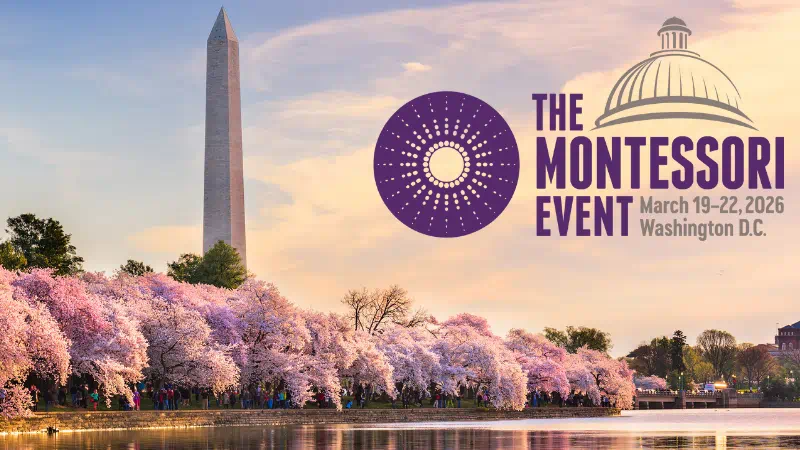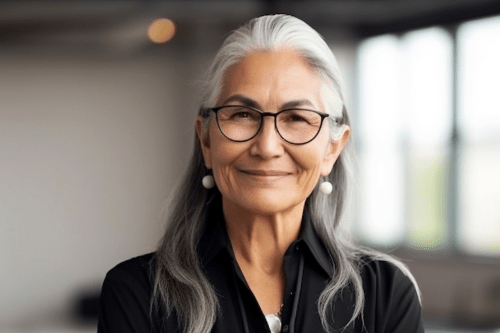This essay appears in the AMS special publication, Equity Examined: How to Design Schools and Teacher Education Programs Where Everyone Thrives.
Indigenous Montessori Institute (IMI) is an anti-racist Montessori teacher training program that centers the reclaiming of our Indigenous children’s education. IMI is an offshoot of the Keres Children’s Learning Center (KCLC), a not-for-profit educational organization that supports Cochiti Pueblo children and families in maintaining, strengthening, and revitalizing their heritage language of Keres. IMI features, among other offerings, a 10-module survey course called Reclaiming of Indigenous Education (RIE), which examines the components that make KCLC what it is, as well as the educational context that made KCLC necessary. IMI continually brings awareness to issues around Indigenous education and offers support for other educators, Tribal Nations, and educational institutions. The 10 RIE modules are:
- History of Indigenous Education
- Anti-Racism Training (via our partners at Embracing Equity)
- Understanding the Story of Why KCLC Has to Exist
- Diving Deeper into the Wider World of Indigenous Education in the U.S.
- Culturally Sustaining Pedagogies
- Language Immersion Techniques
- Indigenous Dual Language Education
- Indigenous Knowledge Systems
- Understanding By Design
- Tyranny of Outcomes
This RIE survey course was needed because, to our knowledge, when we began planning it in 2017, no Montessori teacher training center offered any single one of these 10 modules, much less the whole course. RIE is available as a standalone course, or can be embedded in Montessori training through a partnership with the Southwest Institute of Montessori Studies (SIMS). In addition, IMI offers technical assistance to organizations developing their anti-racist muscles and expanding their critical consciousness. In 2023, IMI will offer two additional courses that take participants through a deeper, more detailed examination of two KCLC components: Indigenous Language Immersion and Indigenous School Leadership Design.
We cannot have a conversation about IMI without looking at why it—and the Keres Children’s Learning Center (KCLC)—was needed in the first place. At the time the journey of KCLC started in 2006, Cochiti children’s language and culture still took a back seat in Head Start and public schooling. Unfortunately, this is still the case. New Mexico’s Yazzie-Martinez court case (in which a judge ruled that the state of New Mexico was not providing an adequate education to Native American learners, English-language learners, children with disabilities, and children from under-resourced backgrounds) is a stark example. KCLC, now in its 11th year, has been held up as a model of what Indigenous education can be. We founded IMI in order to create a teacher pipeline for KCLC; our founding board of directors foresaw that we would not be able to send future teachers to existing colleges or universities because they would not come back trained in the way we needed them to be–for example, with an understanding of Indigenous Language Immersion pedagogy and Indigenous Dual Language Education, knowing the history of Indigenous education in the United States, and having had quality Montessori training.
IMI is more necessary than ever. Failure to educate our Indigenous children in a way that does not harm them can be seen in their poor reading and math scores, as reported by the educational assessment NAEP, state public education departments, and local public school district websites. It can also be seen in federal and state policies, such as the imposition of federal and Christian boarding schools, into the Bureau of Indian Affairs Day Schools, on to the Johnson O’Malley Act of 1932, and ending with the momentous Yazzie/Martinez v. State of New Mexico court case in 2018.
Education has always been done to us rather than with us, starting with the federal and Christian boarding schools where children were stolen from their Tribal Nations and families and taken hundreds and in some cases thousands of miles away from their families. When Indigenous children arrived at these violent institutions, they had their hair cut and were given military clothing to wear and were forbidden to speak their Indigenous languages. There is ample documentation for this. The PBS documentary Unspoken: America’s Native American Boarding Schools is an excellent resource with which to start. More information on the Yazzie/Martines v. State of New Mexico lawsuit can be found at the New Mexico Law and Poverty Center and the Native American Budget and Policy Center. 4 years after the court ruling, the state of New Mexico has yet to implement a remedy framework for the whole state.
Indigenous education has great potential. It can be an education where children are grounded in their languages and cultures starting in Early Childhood; steeped in the histories of their respective Tribal Nations; exposed to a general education grounded in anti-racism; and taught with the recognition that our children hold dual citizenship, first and foremost in their respective Tribal Nations, and secondly in the United States of America.
We ultimately want what Dr. Montessori called us all to do in educating the “whole child”–we want children to be able to realize their whole selves. Indigenous education in the United States, as it has existed for over 100 years, is a model that today is only graduating half of its students from high school. Teacher training, including Montessori teacher training, is complicit in this failure. We must reckon with the changes that need to be made. We are reminded that we must not take lightly the words of Dr. Marianna Soto-Manning: “Teacher education is deeply implicated in the reproduction of white supremacy. A mostly white teacher education profession prepares mostly white teachers to engaging practices rooted in racist ideas. It’s no longer enough to denounce we must fundamentally transform what we do!” From the outset, IMI provides explicitly anti-racist, anti-bias teacher training.
And yet we realize that it will never be enough for a Montessori guide to just allow their students to explore their Indigeneity. !e children must also see themselves reflected back to them in the classroom every day. And this is what the Montessori approach allows for. For example, with the Fifth Great Lesson, The Story of Numbers, children must be able to understand numbers in a way that is grounded in sharing and not just capitalism. We train our guides to understand the importance of reorienting themselves to geography; rather than looking at it from a position of ownership, extractive resources, and political boundaries, we model a position of relationship with the land, maintaining existing natural balance, and discovering the human being’s Cosmic Task in terms of reciprocity with Earth. There are countless other examples of guides who, after graduating from IMI, have been empowered to be lovingly critical of their Montessori albums and lessons, especially when they perpetuate narratives that are false and do not include all children.
In Montessori teacher training, Montessori teachers are expected to practice building muscle memory with the materials. !e same need for muscle memory needs to be applied to developing our anti-bias, anti-racist muscles and our critical race consciousness. We need to expand our lens and bring that expanded critical consciousness into our practice. We can no longer talk about the “child” while being oblivious to the stats in America regarding Indigenous children. Dr. Montessori stated that “of all things, love is the most potent.” And it is with this deep love for our children and Indigenous people that we will continue to see IMI grow and thrive.
AMS Learning Live
Enhancing Curriculum & Centering Indigenous Perspectives
Join Cheyenne Kippenberger of the Seminole Tribe of Florida for a conversation about debunking negative stereotypes, shifting cultural narrative, centering Indigenous and Native perspectives, and enhancing Native American curriculum in the classroom this Native American Heritage Month. Register and join the conversation on November 20, at 7:00 PM (ET).

As an AMS member, you have access to Equity Examined: How to Design Schools and Teacher Education Programs Where Everyone Thrives. Become a Member today.


